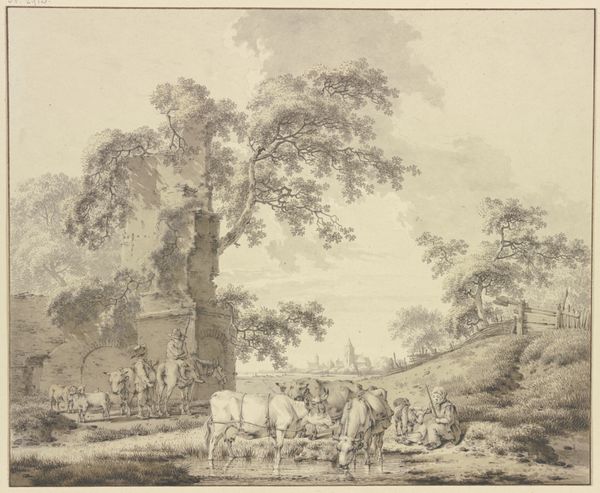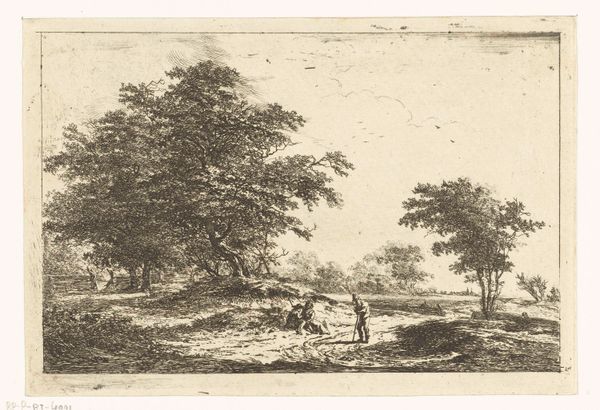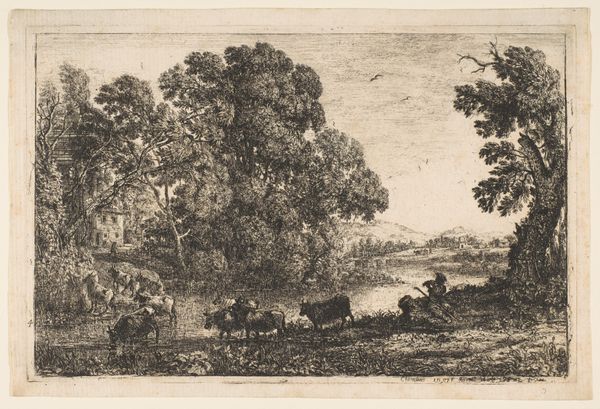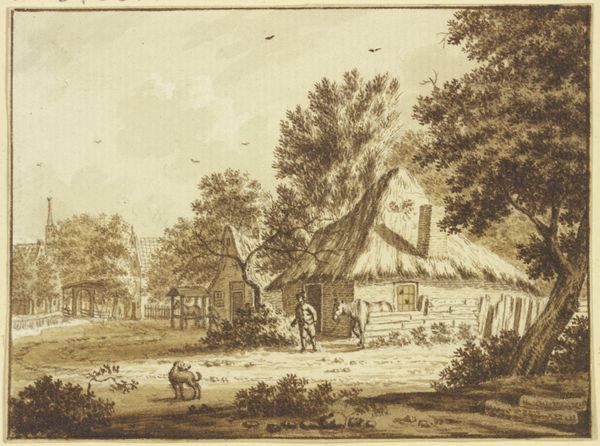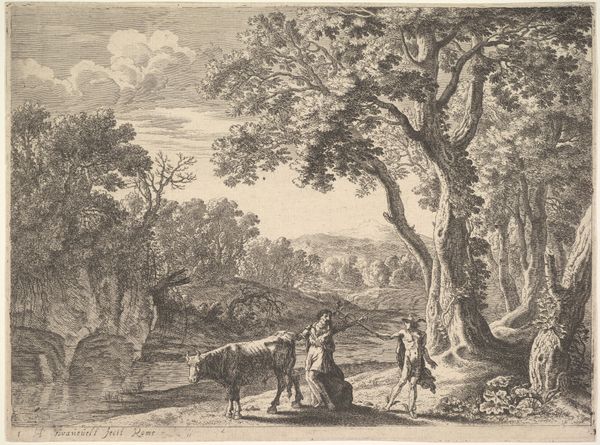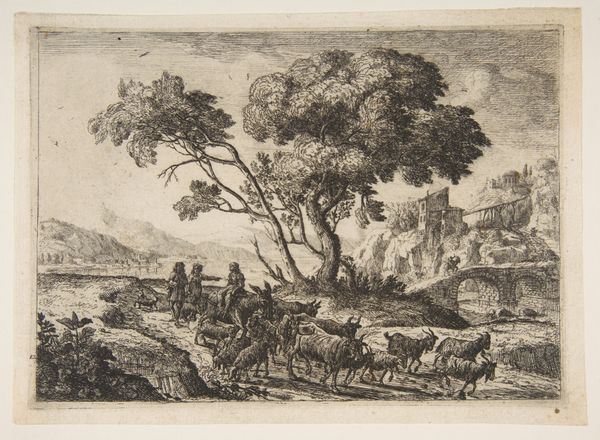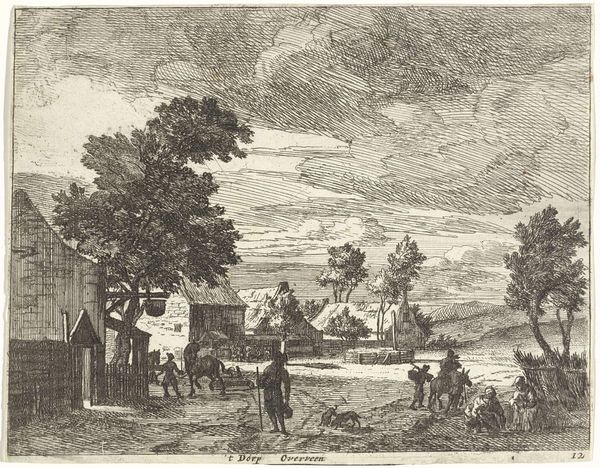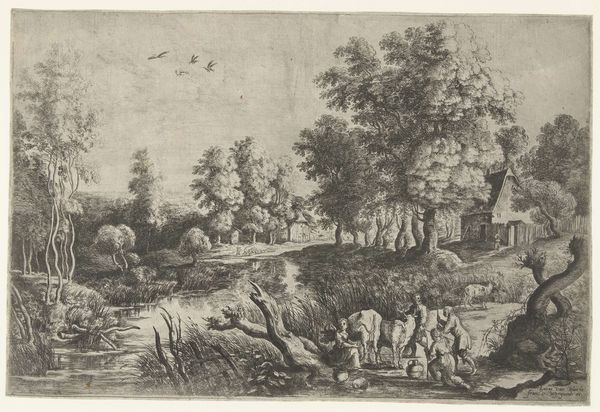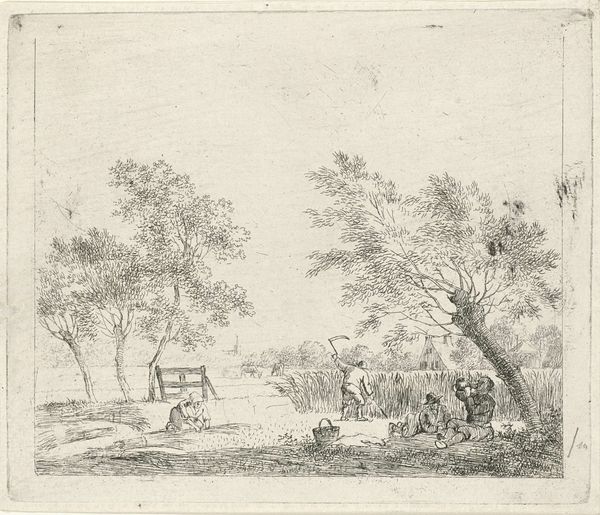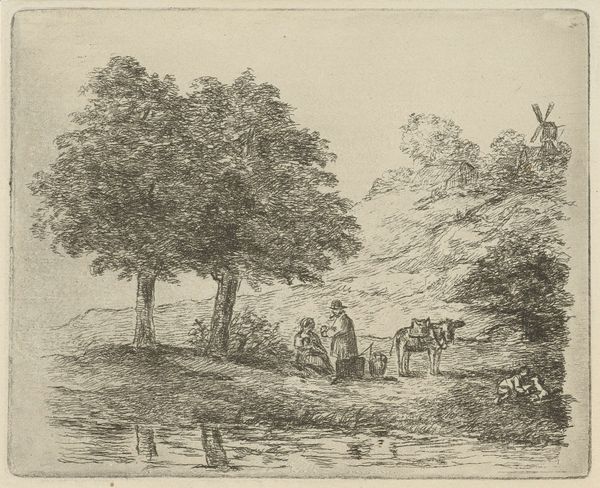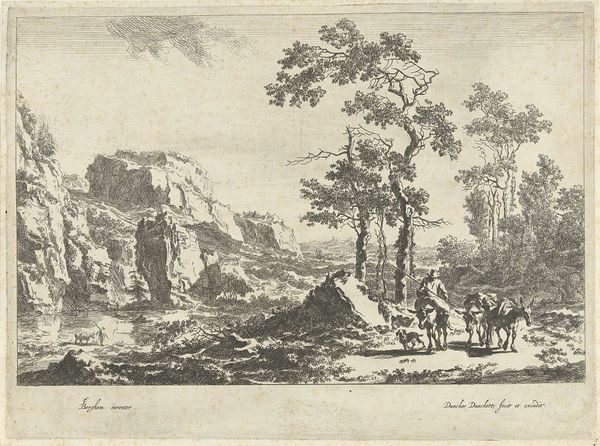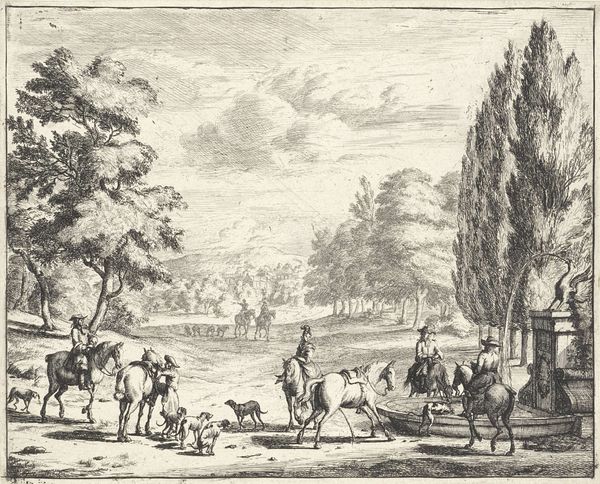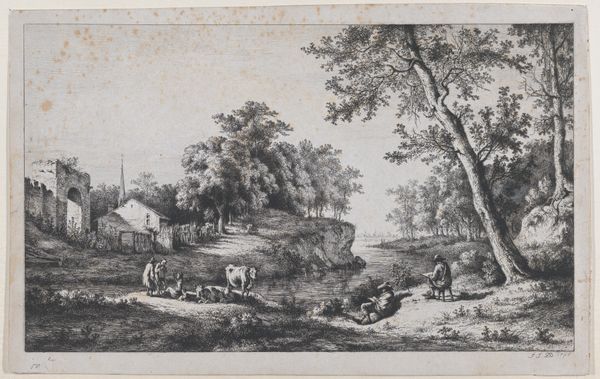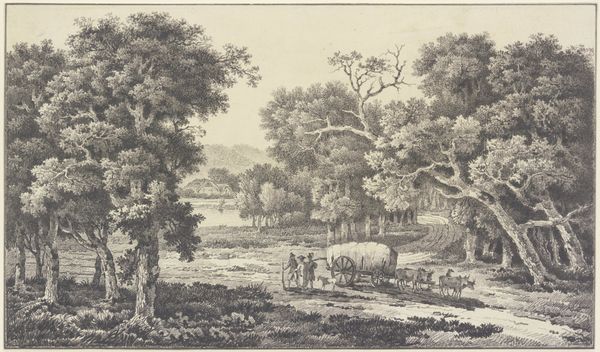
drawing, print, etching, paper
#
drawing
#
baroque
# print
#
etching
#
landscape
#
paper
#
history-painting
Dimensions: 125 × 192 mm (image); 130 × 200 mm (plate); 148 × 214 mm (sheet)
Copyright: Public Domain
Curator: Before us, we have Claude Lorrain’s etching, “The Dance on the River Bank,” created around 1634, currently held in The Art Institute of Chicago. Editor: It strikes me as a strangely peaceful image, almost melancholic, despite the title suggesting revelry. The monochromatic palette definitely lends a somber tone, but it’s quite fascinating in its precise detail. Curator: Lorrain, a master of the Baroque landscape, truly excelled in capturing the essence of light and atmosphere. Look at how he employs etching to create these nuanced tonal gradations. Semiotically speaking, the receding landscape points toward an implied depth of experience beyond immediate perception, while figures assume a recessive presence within the landscape's sublime grandeur. Editor: Absolutely. But considering Lorrain's historical context, shouldn't we consider how this idealized landscape perhaps masks the realities of 17th-century rural life? The seemingly carefree peasants by the riverbank, are they truly representative, or is this a romanticized vision crafted for a specific, likely aristocratic, audience? Is it then reproducing an ideology that supports certain social and economic configurations? Curator: An interesting perspective. Certainly, his work contains an elegiac inflection that is a persistent feature of baroque representation, however the work has to be assessed and understood with the structures particular to landscape design of that specific historical moment. Lorrain was creating during a period heavily influenced by classical ideals—a sort of pictorial rhetoric that should also take into account other classical elements present here: idealized nature, carefully arranged compositions, and an underlying theme of Arcadia. Editor: Yes, but how complicit are such elements with the sociopolitical contexts within which the art and artist also move and operate? We also must account for the pastoral as a politically constructed space that often functioned to conceal—as well as mediate—relations of power. Curator: A point well taken. Regardless, "The Dance on the River Bank" functions as a window into the past—prompting consideration of how we shape history's telling and what that entails structurally. Editor: Precisely, and prompting, moreover, the imperative for ethical interpretation—requiring historical consciousness as integral to visual interpretation itself.
Comments
No comments
Be the first to comment and join the conversation on the ultimate creative platform.
